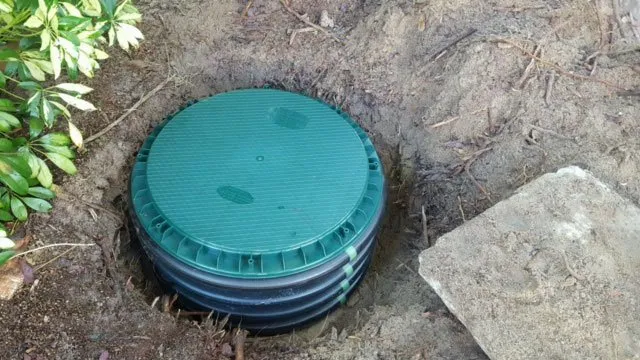When buying a home, most people focus on the standard inspections—plumbing, electrical, and foundation checks—but there’s one more crucial test that shouldn’t be overlooked: the septic inspection. In Florida and other rural areas, septic systems are common, and while they work efficiently, they can develop problems over time. Understanding how septic inspections work can help you avoid costly repairs and ensure the system is functioning properly.
In this blog post, we’ll break down why septic inspections are important, what they involve, and how they can benefit both current homeowners and prospective buyers. Whether you’re purchasing a home or maintaining one, knowing the ins and outs of a septic inspection is key to protecting your investment.
What Exactly Is a Septic System?
A septic system is a self-contained wastewater treatment system used in homes not connected to a public sewer system. It typically consists of a septic tank and a leach field. Wastewater from your home flows into the septic tank, where solids settle at the bottom, oils and grease float to the top, and the middle layer, called effluent, is filtered into the leach field. The effluent then percolates through soil, where it is naturally filtered before reaching the groundwater.
Although septic systems are designed to last, they can encounter problems such as sludge buildup, leach field failure, or damage to the tank itself. Regular inspections help ensure the system remains functional and avoid expensive repairs in the future.
Why is a Septic Inspection Necessary?
Whether you already own a property with a septic system or you’re in the process of buying one, scheduling a septic inspection is crucial. For homeowners, periodic inspections can help catch problems before they become major issues. For buyers, a septic inspection ensures the system is in good working order and prevents surprise repairs after the sale is completed.
A septic system generally lasts around 25 years, but issues can arise at any point during its lifespan. Since septic repairs are often expensive and can lead to health risks, a thorough inspection provides peace of mind and helps you avoid unnecessary costs and headaches down the road.
What Does a Septic Inspection Involve?
A professional septic inspection is a detailed process that includes several tests to ensure the system is operating properly. Here’s what you can expect:
1. Pre-Inspection Assessment
Before the actual inspection, the technician will gather critical information about the septic system’s history. This includes:
- Records of tank pumping
- Previous inspections
- Past damage or repairs
- The system’s location
- A map of the system, if available
If the seller cannot provide this information, it might suggest the system hasn’t been properly maintained, which can be a red flag for potential buyers.
2. Flow Test
One of the first steps is the flow test. This checks if enough wastewater is being sent into the septic system. If there’s not enough liquid flowing, the problem could lie with the plumbing or sanitary lines. On the other hand, too much water entering the system may indicate an issue downstream. The inspector will examine the entire system to locate the source of the problem.
3. Tank Inspection
The inspector will assess the septic tank’s condition, measuring the depth of the sludge and scum layers. Ideally, the tank should have about 40% effluent, with the remaining layers evenly distributed. An imbalance could suggest problems with the leach field, which will be examined next.
4. Leach Field Inspection
The leach field is where the treated effluent is absorbed into the soil. The inspector will visually check the field for signs of overflow, such as wet patches or foul odors. If there’s any hydraulic stress (signs of overloading or malfunction), the inspector will probe the area to identify the cause.
5. Final Report
After completing all tests, the inspector will provide a comprehensive report detailing the condition of the septic system. This will help homeowners understand any necessary repairs and inform buyers about potential issues.
Different Levels of Septic Inspections
Septic inspections vary in depth, depending on the level of concern. Here’s a breakdown of the types of inspections available:
- Level 0: This is a basic inspection that includes a visual check and a dye or loading test to detect overflows. It’s a simple way to get an overview of the system’s condition.
- Level 1: This inspection is more in-depth. The inspector will open the maintenance cover and check the waste pipes and effluent screens for potential issues.
- Level 2: During this inspection, the inspector will test the thickness of the layers in the tank and check the distribution boxes for leaks.
- Level 3: This is the most thorough inspection, covering all parts of the septic system. It’s recommended for homebuyers and should be conducted by homeowners every 3-5 years to ensure the system is in top shape.
Don’t Take Chances with Your Septic System
Septic system issues can lead to costly repairs and pose health risks if left untreated. Whether you’re buying a new home, selling your current one, or just maintaining your property, a septic inspection is essential to avoid surprises. By catching problems early, you can save money and ensure the safety of your home and family.
Looking for a Septic Inspection in Florida?
If you’re located in Central or South Florida, Guardian Angel Inspections is here to help. Our team has the experience and certifications needed to provide an accurate, detailed septic inspection. We pride ourselves on offering fast, reliable service and thorough reports, so you can make informed decisions about your property.
To schedule your inspection service, give us a call at 561-512-7854 or fill out our contact form. Don’t risk costly repairs—ensure your septic system is in good condition with a professional inspection today.
